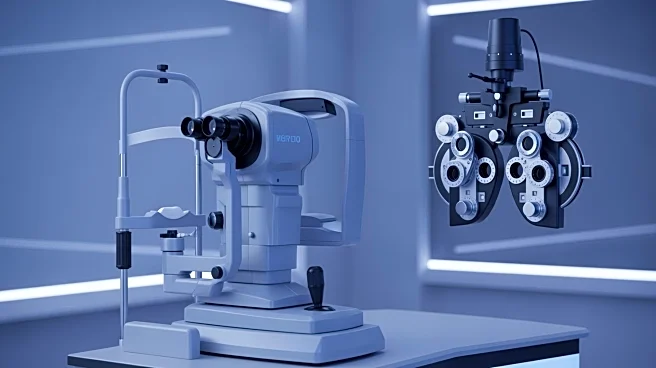What's Happening?
Dyno Therapeutics has unveiled Dyno-bn8, a novel AAV vector designed to improve gene therapy delivery to skeletal and cardiac muscles. Announced at the Genetic Agency Technology Conference, Dyno-bn8 demonstrates
significant improvements in delivery efficacy, safety potential, and manufacturability compared to existing AAV capsids. The vector achieves therapeutic delivery at a substantially lower dose, reducing manufacturing costs and improving safety by minimizing liver exposure. Dyno-bn8's engineered muscle tropism allows for efficient systemic intravenous injection, targeting a high percentage of muscle fibers while detargeting the liver.
Why It's Important?
Dyno-bn8 represents a breakthrough in gene therapy for muscle and neuromuscular diseases, addressing key challenges in delivery efficiency and safety. By reducing the required dose and liver exposure, Dyno-bn8 could lower production costs and minimize potential side effects, making gene therapies more accessible and safer for patients. This advancement could accelerate the development of curative treatments for conditions that currently have limited therapeutic options, potentially transforming the landscape of genetic medicine.
What's Next?
Dyno Therapeutics plans to license Dyno-bn8 to gene therapy developers and partners, facilitating its integration into clinical applications. The company will continue to refine its AI-driven design models to enhance gene delivery technologies further. As Dyno-bn8 progresses towards clinical trials, stakeholders in the biotech industry will closely watch its development, anticipating its impact on gene therapy practices and patient outcomes.
Beyond the Headlines
The introduction of Dyno-bn8 underscores the growing role of AI in genetic medicine, highlighting the potential for technology to solve complex biological challenges. As AI-driven solutions become more prevalent, ethical considerations regarding data usage, privacy, and the implications of genetic manipulation will need to be addressed. Dyno's approach may also influence regulatory frameworks for gene therapies, prompting discussions on safety standards and approval processes.











